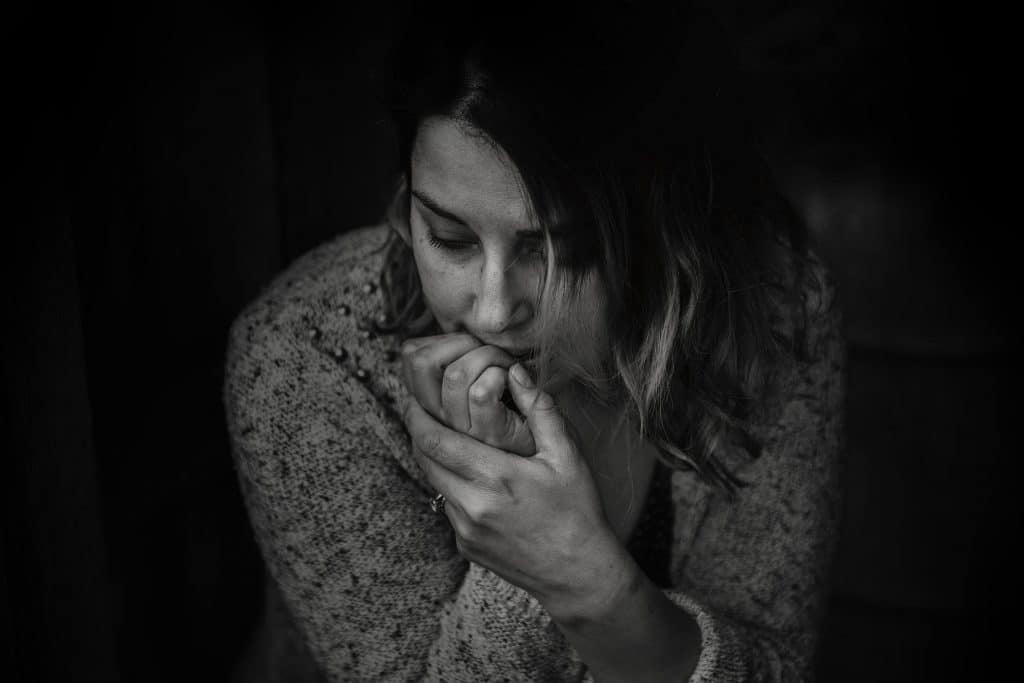Panic disorder is characterised by recurrent panic attacks, in addition to feelings of apprehensiveness with regards to the occurrence of future panic attacks. People who suffer from panic attacks normally experience sudden and intense feelings of fear, terror or apprehension, without the presence of actual danger.
Panic disorder is a type of anxiety disorder, and tends to affect women twice as often as men. Symptoms usually begin in the teens or early 20s. Basically, panic disorder is characterised by two main types of panic attacks, including: unexpected panic attacks, and expected panic attacks.
Unexpected Panic Attacks
Unexpected panic attacks usually occur suddenly without being prompted by a fearful situation or a fearful thought or feeling. They happen without any external or internal cues and seem to occur “out of the blue” when the patient is completely relaxed.
Expected Panic Attacks
Expected panic attacks happen when someone is exposed to a situation or object for which they carry a fear. For instance, someone who has a fear of flying may have a panic attack after being seated in a plane or during take-off.
A panic attack usually happens suddenly and normally over a short period of time. Generally, a panic attack lasts fifteen to twenty minutes or so, and then subsides. Sadly, some attacks may last longer or may occur in succession, making it difficult to determine when one attack ends and another begins. These attacks may involve severe anxiety, such as chest pain, nausea, or sometimes a feeling like you are about to die; these symptoms can be traumatic for patients and their loved ones.
Panic disorder affects 2 to 3 percent of people in the United States each year. Individuals with panic disorder tend to have abrupt panic attacks, and they thereafter become preoccupied with the fear that it may happen again, at any time.
If left untreated, this disorder can have an adverse impact on the patient’s quality of life. More often than not, people with panic disorder tend to become less productive when panic attacks occur, as they find it difficult to perform their normal daily tasks. Their family life can be seriously disrupted, too. The condition can interfere with other aspects of a person’s life, prompting them to avoid work or school and avoid interactions and/or situations wherein they fear a panic attack may suddenly occur.
Symptoms of Panic Disorder
A sudden and intense rush of panic and fear is characteristic of a panic attack. Some of the key signs and symptoms of a panic attack include:
● intense feelings of panic and stress
● trembling and shaking
● sweating
● increased heart rate
● palpitations, or pounding heart
● a feeling of choking
● difficulty breathing
● numbness or tingling in the hands and/or feet
● feeling dizzy or lightheaded
● nausea or abdominal distress
● sensations of shortness of breath
● chest pain
● a fear of dying
● feeling unreal or detached from yourself
● fear of losing control or going crazy, and
● chills or hot flushes.
An attack can last from a few minutes to an hour, and after it is over, some people recover quickly and never experience another. However, many people continue to experience panic attacks on a regular basis. Due to the intense fear and discomfort associated with experiencing a panic attack, they may feel persistently concerned about the occurrence of panic attacks in the future.
Risk Factors for the Development of Panic Disorder
Panic disorder is a fairly common condition in the general population and can occur at any age. However, panic disorder normally affects people between early adolescence and their mid-forties. Among all anxiety disorders, panic disorder has the highest number of medical visits and serves as a very costly mental health condition.
Several factors have been found to increase the risk of a person having panic disorder. These risk factors, however, are not the main causes of panic disorder, but merely identify specific characteristics that are commonly associated with developing this mental health illness. These risk factors include a person’s age, gender, medical history, family environment, economic status, personal circumstances, and life experiences.
For instance, a new mother has a greater risk of experiencing panic during the first four months after giving birth. In this case, the occurrence of panic attacks tends to decline after they become comfortable with their newborn and with their new role in life. Other factors such as a stressful environment at school or work, major life changes like losing a job or divorce, and/or financial problems may act as triggering factors for the development of panic disorder.
Causes of Panic Disorder
At this current time, there is minimal solid scientific information which clearly dictates the main causes of panic disorder. However, some connections have been made with regards to major life changes, that may trigger panic attacks and panic disorder. Additionally, people with panic disorder may possess brains that are especially sensitive in reacting to fear.
In many cases, an individual suffering from panic disorder may concurrently be battling with major depression (however, there is no clear evidence thus far to support that one mental health condition brings about the other). Some studies suggest that medical conditions and other physical factors may cause panic disorder (such as mitral valve prolapse, hypoglycemia, hyperthyroidism and/or medication withdrawal). However, more research is required in this field. Moreover, the consumption of drugs or alcohol in an attempt to deal with the distress associated with panic disorder may worsen the symptoms of the disorder. Speaking to a medical expert regarding your personal symptoms and possible causes is advisable, if you are struggling with managing panic disorder.
Things You Can Do to Help You Manage Panic Disorder
When left untreated, panic disorder can wreak havoc with a person’s overall mental health, and their ability to manage and control regular panic attacks may worsen over time. If a person is also subject to stressful or traumatic experiences, the symptoms and effects of panic disorder may be made worse. Sadly, in many cases, individuals suffering from panic disorder often do not seek professional assistance until they’ve become completely dysfunctional.
The symptoms and effects of panic disorder can be frightening and disruptive to a person’s day-to-day life. Fortunately, panic disorder is treatable, and most people will find significant relief once they have sought therapeutic intervention.
If you or someone you know are battling with panic disorder, the following are some strategies that you may like to employ in order to manage and combat associated symptoms.
Gain Knowledge of Panic Disorder
Educating yourself about panic disorder is the first step towards understanding what is happening in your body when you experience an attack. Educating yourself regarding the signs, symptoms and potential treatment modalities will assist you in making your recovery process possible and a lot easier.
Gaining knowledge does not mean that you have to be an expert on panic disorder. The important thing is that the information you gather will expand your understanding of your current situation, and how, in addition to receiving professional help, you can work to recover from panic disorder (including remedies which may alleviate the symptoms you experience whenever an attack occurs).
Seek Professional Help
Due to the myriad of medical information available online, there are many instances where a person tends to self-diagnose their situation, mistaking their personal circumstances with other illnesses, based on what they have read online.
This growing habit of many people can be dangerous, because the patient may assume that he/she knows the apparent necessary steps to alleviate what he/she is experiencing. Some remedies may be beneficial, but often self-diagnosis and treatment won’t provide an everlasting solution (especially if what you are facing is panic disorder).
Hence, it is imperative to seek professional help where you think you may be suffering from panic disorder. Mental health professionals are trained in diagnosing and treating panic disorder, and can devise a treatment plan specific to you, depending on your personal circumstances and medical history.
While it is true that reaching out and talking to your family and friends will help you lessen the pain and discomfort you are experiencing, where you are suffering from panic disorder (or any mental health illness for that matter), it is always best to seek medical assistance from an expert, who can guide you on exactly what you need to do in order to feel better again.
Change the Way You Think
Thought processes associated with panic attacks can be grouped into one of two main categories: (1) overestimating and (2) catastrophising. Individuals who suffer from panic disorder must learn how to properly identify and challenge sabotaging thoughts to break the cycle that triggers and fuels physical feelings of panic.
The first step in changing the way you think is to clearly identify your worrying thoughts. It is a good idea to write down your worrying thoughts whenever you have the urge to escape or prevent a situation. Try to repeat this exercise for a week or so.
The second and final step in changing the way you think involves examining these scary thoughts and challenging their accuracy. As mentioned, a person battling with panic disorder may tend to overestimate (where one believes that a highly unlikely situation is about to happen), or catastrophise (where one imagines the worst possible thing is bound to happen and that we will not be able to cope) a situation.
In order to challenge your overestimating thoughts, you first need to acknowledge that these are mere guesses, not facts, about what will occur in the future. Assess the situation objectively, as it will serve as the basis for and against your worrying thoughts. As for catastrophic thoughts, it is helpful to imagine the worst possible thing that could happen and prepare yourself as to how you could best handle that sort of outcome, should it ever occur.
A hallmark aspect of panic disorder is that panic attacks often happen without any warning. Signs and symptoms of intense and uncontrollable fear develop suddenly, often without an apparent cause, and peak within several minutes. Commonly, individuals suffering from these attacks self-perceive a lack of control. If you or someone you know is battling with panic disorder, feel free to get in touch with our friendly team at Blissiree Pty Ltd. Panic disorder is a serious mental health condition and help from a medical expert is essential to get you back on your feet.





